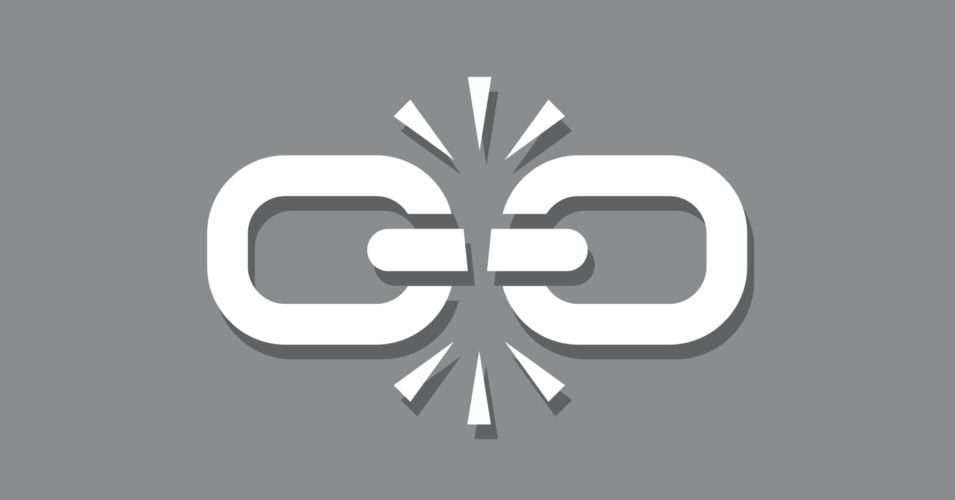We all know that as long as Google uses links to help determine ranking (not a policy they are likely to abandon), we need backlinks from high authority sites. And link building has been around from the start. But like primitive man, early link building had a long way to go before it evolved into something better.
Here’s a brief history of that evolution.
Early Link Building: Black Hats and White Hats
Link building started like the old west – there were good guys and bad guys, but often the bad guys won the top spots on Google. The algorithm was not as smart then, and lots of links, even from terrible sources, could drive a horribly designed site to one of the top ten spots on Google.
As a result, there were many black hats working for the good guys because the way to fight evil was with more evil. That didn’t last.
Paid Link Building: The Gray
Besides link building that broke the rules but got results, there was another “gray” option – paid link building. You approach a site, pay for them to place your link there, and ta-da! Instant links from a high-authority site.
This was a bit of a gray area, but the thing is, this still happens. Get the right contributor on Forbes, and for a rather exorbitant fee, they will link to your site. Other website owners charge a small “editorial fee” for posting articles with links, a practice that narrowly skirts the “paying for links” policy. However, at one time, this was a key part of any digital marketing strategy.
Comments, Forums, and Spam
Ever notice how many comment sections and forums are moderated and clearly state “no spammy links”? Or, in many cases, no links at all are allowed? This resulted from the bad link-building practice of adding links to comments and forums to get a “do follow” link back to your site.
Genuine comments were fine, but it turned into a spammy “I found this very informative” or other generic messages that got quickly deleted or banned. For the most part, this kind of link building is dead.
Guest Posting
Guest posting is still a valid type of link building. Essentially, you provide great content to someone else’s site, and as a result, you get publicity and a link back to your own site. The problem with guest posting became the same as comments and forums. “Gray hat” link builders would try to get site owners to post brief, poorly written blog posts in exchange for a link.
Google quickly got wise to this technique. As Matt Cutts of Google famously said, “Your links don’t need to look natural, they need to be natural.” The end result of this was that many sites closed their guest posting options. Others developed strict guest posting guidelines to keep the spam at bay.
While this method still works, spammy guest posting can hurt a brand’s ranking. Or worse, it could get them kicked out of the search engine result pages (SERPs) altogether.
Article Directories and Private Blog Networks
Another gray area that worked for a while was article or resource directories and private blog networks. The two are only tangentially related, but they worked something like this:
- You link to a directory page as a resource in one of your posts.
- They link to your post or a page on your site.
- The directory gets authority from Google because all kinds of great sites are pointing to it.
- You get the benefit of their authority because they are linking back to your site. It’s a network of sorts, where everyone “wins” in a way.
In a related way, Private Blog Networks or PBNs came into play when a brand would build a network of their own sites. Even though they owned all of them, they would each link to the other, creating authority for the sites and the main company site, which was the ultimate goal. Essentially, they were guest posting within their own network, often with duplicate or near-duplicate content, and trying to win rankings that way.
Google figured this out, too. Now PBNs are a major issue, and if they are linking to your site, you can be penalized, as can that site. The tell-tale is that these come and go. Once penalized, the owner simply buys another domain, reposts content, builds authority, and the cycle continues.
Post-Penguin Power
The big update that upset and changed all of that was called Penguin. In short, it was designed to catch and penalize all these gray and black hat methods, and search engine optimization (SEO) companies built on them had to abandon them quickly. It turned the industry on its head and made everyone shift best practices almost overnight.
However, this does give power to those who are doing it right, and there are several ways to do things correctly.
PR and Earned Links
The newest trend is public relations (PR) and earned links or earned media. In this model, you create great content that is worth linking to and often more expensive to create. In trade, you get great links to your site because your content has actual value for the site that links to it. This is the easiest and cleanest way to earn links yet.
Need help with your digital marketing strategy and link-building efforts? Our strategists at Zero Gravity Marketing can help. Contact our expert team today to get started!









